Understanding the Crown of Thorns: Guide to Its Symbolic Meaning
The Crown of Thorns, first placed on Jesus Christ during his crucifixion by Roman soldiers, symbolizes profound suffering, martyrdom, and the mockery of Jesus' kingship. This emblematic icon fulfills Old Covenant prophecies and underscores the redemptive nature of Christ's ordeal.
Historically significant and artistically depicted from the Middle Ages to modern times, the Crown transcends its religious origins to articulate broader human experiences of anguish and resilience. In literature, it evokes themes of redemption and the human condition.
Exploring further reveals its evolutionary symbolism that resonates with contemporary social and psychological struggles.
Key Takeaways
- The Crown of Thorns symbolizes Christ's suffering and sacrifice during the crucifixion.
- It represents mockery of Jesus' kingship by the Roman soldiers.
- Artists and writers use it to explore themes of human suffering and redemption.
- The symbol has evolved to represent mental health challenges and personal sacrifice.
- It highlights resilience and the struggle to overcome adversity in modern interpretations.
Historical Origins
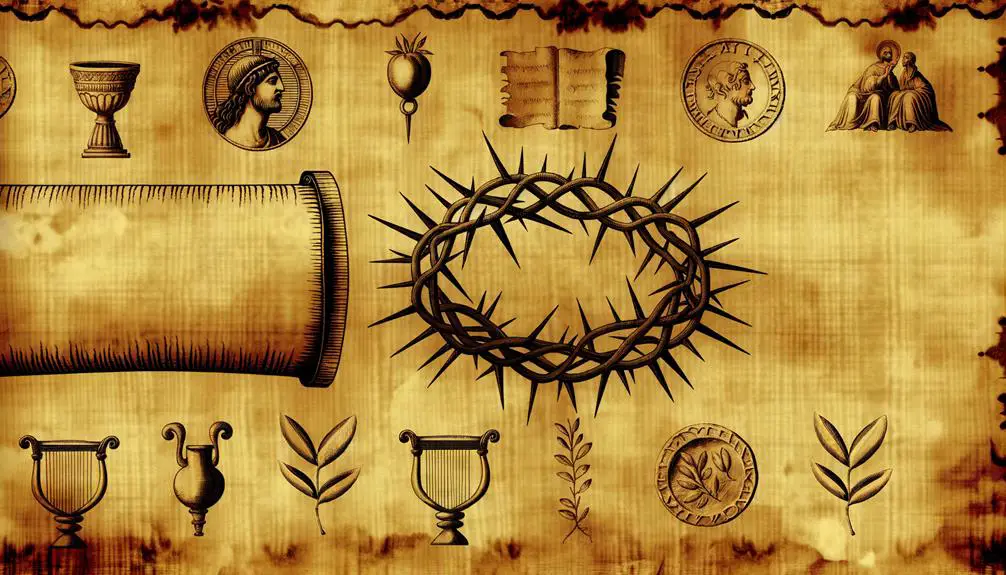
The historical origins of the Crown of Thorns symbol can be traced back to the Passion of Christ, as detailed in the canonical Gospels of the New Scripture. This emblematic artifact, according to textual sources, was mockingly placed on Jesus' head by Roman soldiers during his crucifixion to belittle his claim of kingship.
Historical records and archaeological findings suggest that the crown was crafted from a plant with long, sharp thorns, likely symbolizing suffering and martyrdom. Its contextual significance extends beyond the immediate event, reflecting the socio-political tensions of Roman-occupied Judea and the complex interplay of power, authority, and resistance.
Consequently, the Crown of Thorns serves as an enduring symbol deeply embedded in both historical and cultural narratives.
Biblical Significance
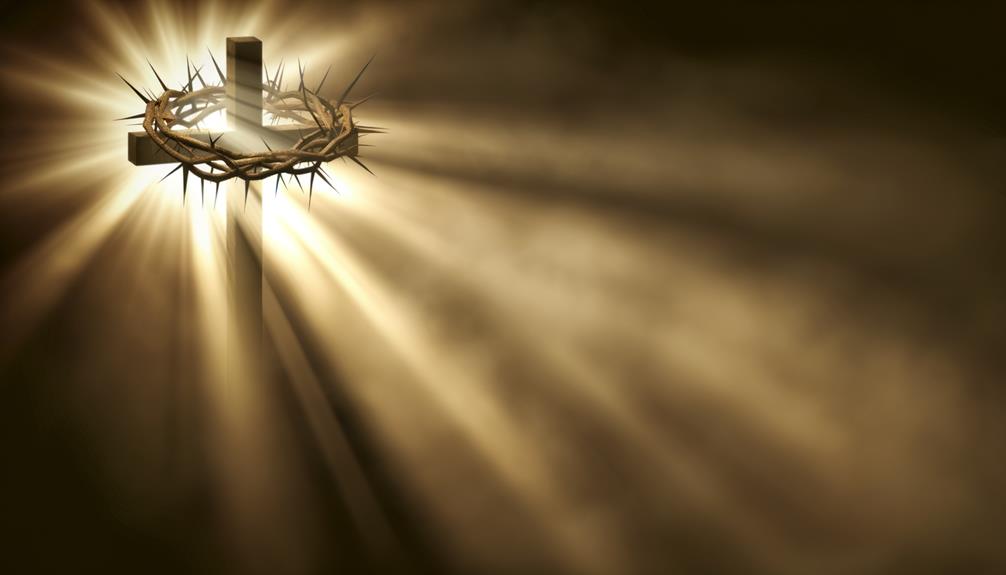
Central to Christian theology, the Crown of Thorns carries profound biblical significance as it symbolizes both the suffering of Christ and the paradox of his kingship. This emblem encapsulates the duality of Jesus' role as a suffering servant and a divine ruler. The following table elucidates key biblical aspects:
| Aspect | Description |
|---|---|
| Suffering | Represents the physical and emotional agony endured by Christ during his crucifixion. |
| Mockery | Symbolizes the mockery of Jesus' claim to kingship by Roman soldiers (John 19:2-3). |
| Fulfillment of Prophecy | Seen as a fulfillment of Old Covenant prophecies about the Messiah's suffering. |
| Divine Kingship | Paradoxically affirms Jesus' true kingship through suffering and sacrifice. |
| Redemptive Sacrifice | Highlights the redemptive nature of Christ's suffering for humanity's salvation. |
Understanding these dimensions enriches the theological interpretation of the Crown of Thorns in Christian faith.
Artistic Representations
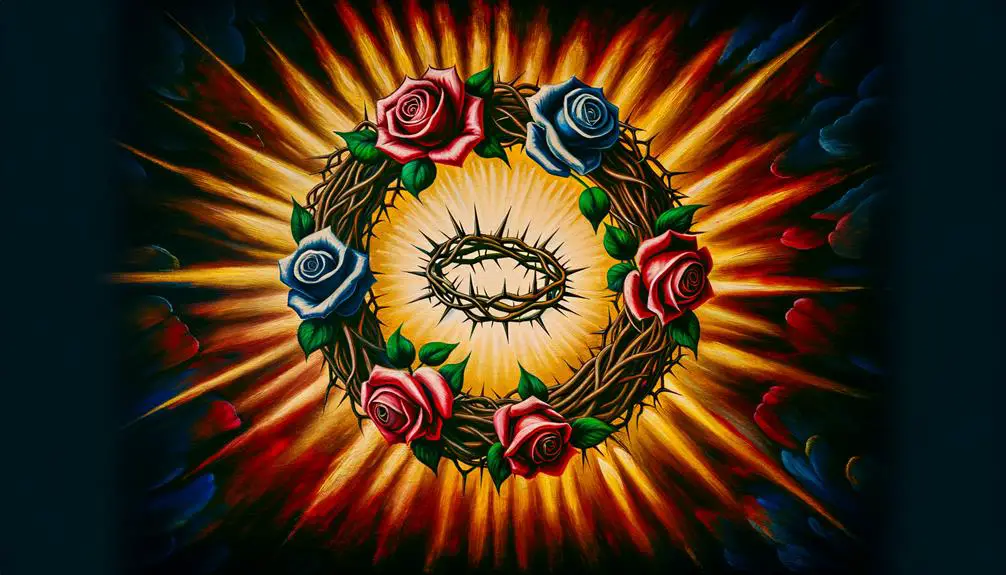
Exploring how the profound biblical significance of the Crown of Thorns has been interpreted, various artistic representations reveal the diverse ways in which this symbol has been visually manifested throughout history.
Medieval and Renaissance artworks often depict Christ adorned with the Crown of Thorns, emphasizing his suffering and sacrifice. Artists like Hieronymus Bosch and Albrecht Dürer intricately detailed the crown to evoke empathy and reflection among viewers.
In contrast, modern interpretations by artists such as Salvador Dalí and contemporary sculptors frequently use abstract forms to symbolize existential anguish and human suffering. These differing artistic approaches highlight the Crown of Thorns' enduring relevance and its capacity to evoke multi-faceted emotional and theological interpretations across cultural contexts.
Symbolism in Literature
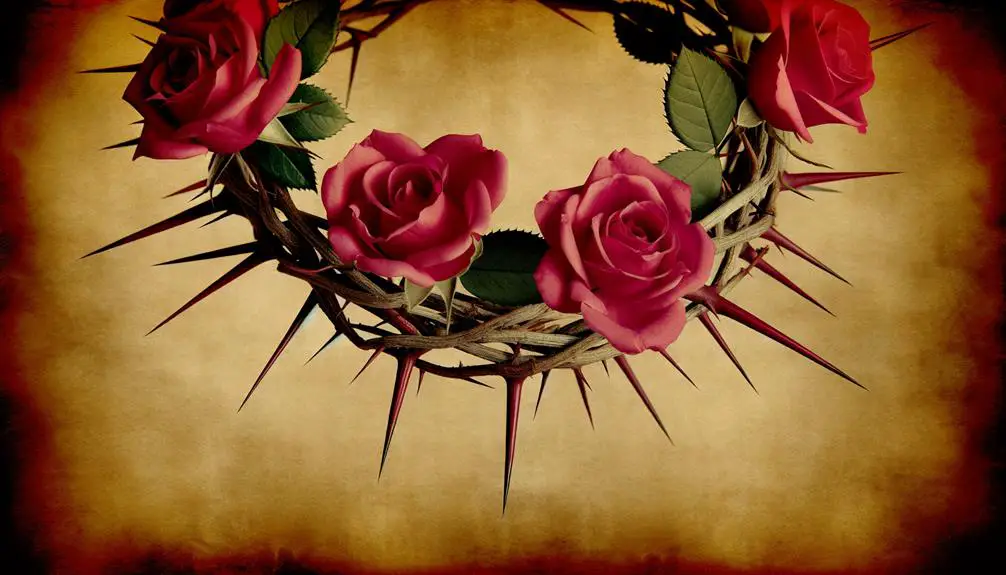
Literary depictions of the Crown of Thorns often employ the symbol to explore themes of suffering, redemption, and the human condition. The symbol serves as a potent narrative device, deeply layered with meaning, and frequently appears in various genres to underscore the following:
- Suffering and Sacrifice: Characters bearing a metaphorical Crown of Thorns often endure immense pain, mirroring Christ's Passion.
- Redemption and Forgiveness: The image evokes the possibility of atonement, where protagonists seek or achieve redemption through their trials.
- Human Frailty and Resilience: The Crown of Thorns embodies the paradox of human vulnerability and inner strength, highlighting the struggle against adversity.
In these contexts, the Crown of Thorns transcends its religious origins, resonating universally with readers.
Modern Interpretations
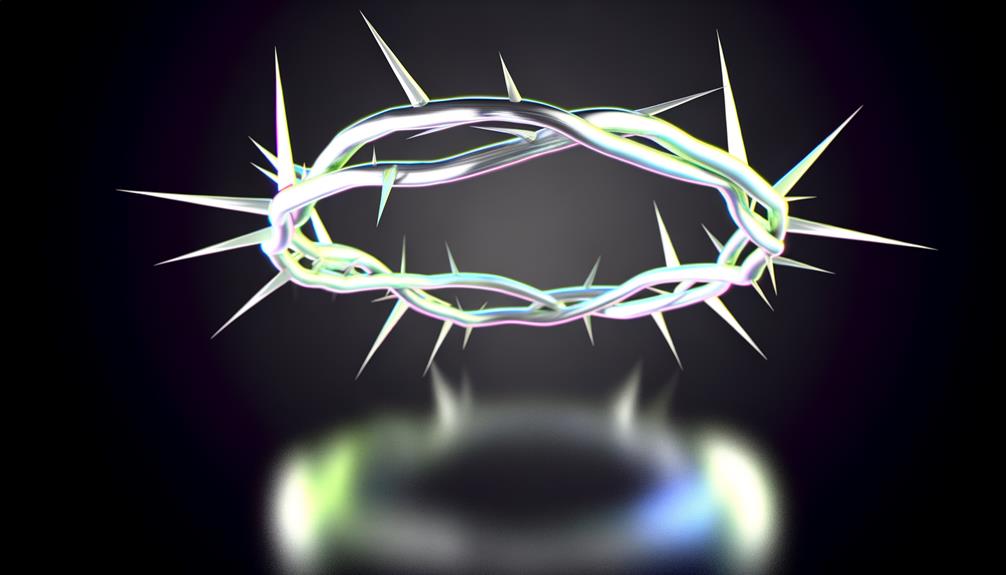
In contemporary contexts, the Crown of Thorns has evolved to symbolize not only religious themes but also broader social and psychological struggles. This powerful iconography now often represents the burdens of mental health challenges, personal sacrifice, and the resilience required to overcome adversity.
The shift from purely religious connotations to more universal applications underscores its versatility in modern symbolism. Artists and writers employ the Crown of Thorns to depict the human condition, reflecting the pain and redemption inherent in life's journey.
This broader interpretation allows for a more inclusive understanding, resonating with diverse audiences who may not identify with its traditional Christian roots but recognize its profound metaphorical significance.
Conclusion
The crown of thorns, historically rooted and biblically significant, transcends religious symbolism to permeate art, literature, and modern interpretations.
Much like the ancient practice where Roman soldiers mocked Jesus by placing a painful crown of thorns on His head, this symbol poignantly illustrates suffering and sacrifice.
Its enduring presence across various mediums serves as a poignant reminder of the complexities of human experience, embodying themes of redemption, endurance, and the human condition's multifaceted nature.





